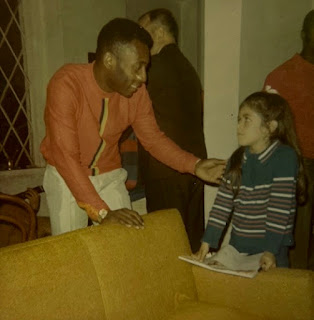Artificial Life Live
The Alife X conference took place on June 3-7, 2006. I gave a talk on the future impact of ICT, in the context of the workshop on Ethical Agents.
Amid discussions and disagreements, we all converged on the view that the issues raised by artificial agents and their (ethical?) behavior will become increasingly pressing in the near future. Not least, I would like to add, because we are becoming more and more hybrid agents (or inforgs), who will perceive less and less any threshold between the world online and the world offline.
A wonderful and most interesting addition to the conference was the Res-Art: Robotics and Emergent Systems exhibit.
Four pieces were outstanding, and, as it happens, accidentally, they represent the four elements:
Four pieces were outstanding, and, as it happens, accidentally, they represent the four elements:
1) (Water) Christy Georg, Attainment
(I thought, before checking on the web, that it was something new, but it seems to be dated to 2002) .
Philosophy of information (PI) take: there is an equilibrium that the artist may propose, or rather may try to make available, but that only the agent, with patience and care, may actually experience. That equilibrium, where two pieces of information, the sound and its pitch, are in perfect synthony, is unique, is fragile and may be missed, but it is repeatable, and repeatable for ever. So there is certainly a sense of uniqueness, but also a sense of circularity, since the sound will be played again, the pitch will be identified again, modulo a quantity of water that will percolate and drip, sculpturing itself and its own acoustics.
2) (Air) Andy Holtin, Contraption for the Influence of Breath
Philosophy of information (PI) take: data in, data out, but the user needs to be located in a very specific space, if breathing is going to cause any movement in the wooden mechanism. So it is presence at distance, but not telepresence in the delocalised sense to which we are getting so used. It is the difference between a fixed IP and a DHCP generated IP. This seems alright. Breathing is something the user is not at leisure to do. Its inevitability and constraining, the reminder that it is only by breathing that informational agents like us are then able to interact with the world, are subtly exploited. The apparatus in which the user must breath to make things work, to give life to the wooden robot like a god would do with some form of matter, is low and unadjustable. It forces the user to bend and adapt. Not any breathing will give life to the mechanism.
3) (Earth) Bill Seeley, Springloaded Action (this is the sculpture pictured above, thanks Bill!)
Philosophy of information (PI) take: the pebble, the "appropriate" wheel (from some mechanism in an old elevator in NY where Bill worked, if I remember the details correctly), the long pieces of steel, the restful dynamics of the composition: this is information at its purest state, earth, the beginning, the elementary, the Ur of what comes next, the old that is timeless (the wheel is not just the wheel of time, it is also a piece of an old mechanism now disfunctional and dismantled, resurrected in a new context), the stable that is easily flexed. Looking at Bill's website, this is the work I like most. It is an exportable work, independent of surrounding technologies and artifacts. The pebble were collected in situ. A touch of "arte povera" and "land art" .
Philosophy of information (PI) take: the pebble, the "appropriate" wheel (from some mechanism in an old elevator in NY where Bill worked, if I remember the details correctly), the long pieces of steel, the restful dynamics of the composition: this is information at its purest state, earth, the beginning, the elementary, the Ur of what comes next, the old that is timeless (the wheel is not just the wheel of time, it is also a piece of an old mechanism now disfunctional and dismantled, resurrected in a new context), the stable that is easily flexed. Looking at Bill's website, this is the work I like most. It is an exportable work, independent of surrounding technologies and artifacts. The pebble were collected in situ. A touch of "arte povera" and "land art" .
4) (Fire) Max Kazemzadeh, Gesture Drawing
Philosophy of information (PI) take: dancing with digital flames, projected on a projected board. The kinetic life of the system is partly regulated by the presence and behavior of the agent/spectator. It is largely a single user application, like Holtin's. And it is an interface not in the sense that it provides a level of abstraction (imagine the map of NY underground as an interface/abstraction made to navigate easily from one station to another), but in the sense that, like Holtin's, it transduces a form of information into another. Like fire that takes some form of energy and extracts heat from it, so the installation takes movements and kinetic patterns and transforms them into a show of dancing elements in a virtual reality context. Every component of the complicated mechanism is re-appropriated, in the sense that it is used in its original function but for a different purpose and in context that could easily be considered unsuitable. The system imposes its logic on the nature of the components, which cannot but obey, slave of their own functions.





Comments
Post a Comment